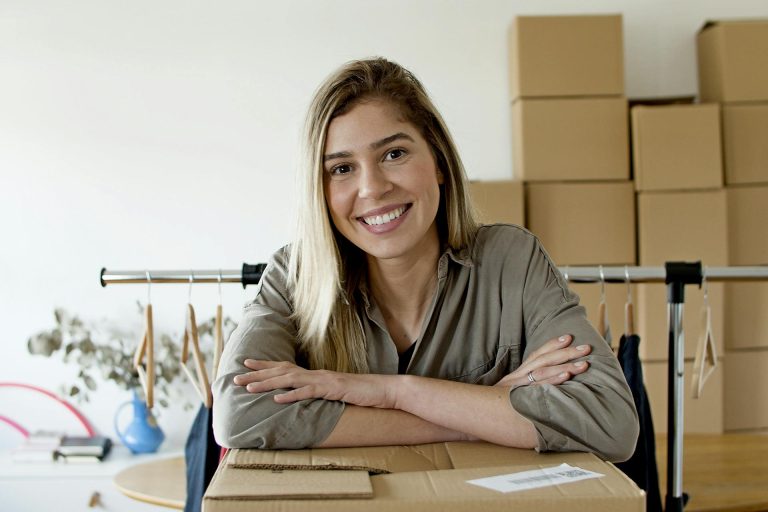Bar coding has revolutionized the way businesses manage their inventory and track their products, but the barcode scanner and UPC (universal product code) was first instituted in a small grocery chain back in 1974. Technology has made an advancement or two since then, but a lot of inventory based companies still rely on barcodes technology that is nearly 50 years old, despite the need for greater data capture.
1D vs 2D
Like any advancing technology, the differences between a 1D and 2D scanner come down to data, how much they can read, and the amount of information they can store.
1D barcode scanners, also known as linear barcode scanners, are designed to read traditional barcodes that are made up of a series of parallel lines of varying widths. These barcodes typically store a limited amount of information, such as a product’s identifier number or price, and are commonly used in retail settings for inventory management, point-of-sale transactions, or warehouse logistics. 1D barcode scanners typically use a laser to read the barcodes and are often created in a “gun” form factor.
2D barcode scanners on the other hand, are capable of reading a wider variety of barcode formats that use patterns of squares, dots, and other shapes to store information, and it is this ability to store significantly more data than 1D barcodes. 2D barcodes can store up to 2000 characters, and can be used to store almost any variety of information, including images, website addresses, and binary data.
2D barcode scanners are also produced in more form actors, and can be either handheld or fixed and often use imaging technology to read the barcodes.
2D barcodes can be read by various types of devices, including:
- Handheld barcode scanners: Portable barcode scanners equipped with imaging technology for scanning 2D barcodes.
- Fixed barcode scanners: Mounted barcode scanners that are typically used in industrial and manufacturing settings for scanning large quantities of barcodes.
- Smartphones: Most smartphones equipped with a camera and a barcode scanning app can read 2D barcodes.
- Tablets: Similar to smartphones, many tablets with cameras and barcode scanning apps can also read 2D barcodes.
- Barcode verification devices: These specialized devices are used to check the quality of barcodes and ensure they are easily readable by barcode scanning devices.
- Automated data collection systems: These systems use multiple barcode scanning devices to collect and process real-time data, like in a warehouse or manufacturing environment.
Overall, the type of 2D device used to read 2D barcodes will depend on the specific application and the needs of the business.
What types of businesses benefit from 2D scanning?
While both 1D and 2D barcode scanners serve the purpose of reading barcodes, the difference lies in the type of barcodes they can read and the amount of information they can store. 2D barcode scanning is more versatile and can be used in a wider variety of applications, while 1D barcode scanning is more limited in its information capture.
2D barcode scanning is particularly useful for businesses that need to encode a large amount of data while still keeping the physical size of the barcode small. This makes it ideal for supply chain and manufacturing applications where items need to be scanned as they move on assembly lines or conveyors, or need to capture and store larger amounts of item or material data.
Examples of businesses that can benefit from using 2D barcode scanning include:
- Manufacturing companies that need to track products and components throughout the production process
- Logistics and distribution companies that need to track inventory and packages as they move through the supply chain
- Healthcare providers that need to track medical equipment, patient information, and maintain records for federal compliance
- Food and Beverage manufacturers that need to track ingredients, production processes, and also want to maintain a reliable record for varying agency compliance
- Retail companies that want to improve inventory management and reduce manual data entry
- Transportation companies that need to track cargo and shipping containers from origin to destination
Every business and industry is different, but the more your products rely on tiers of data, the greater the benefit of 2D scanning.
How can a business create 2D barcodes?
Here are some general steps for creating a 2D barcode:
- Choose a 2D barcode format: There are several different types of 2D barcodes available, including Data Matrix, QR Code, PDF417, and others. Each format has its own set of features and capabilities, so choose the one that best meets your needs.
- Generate the barcode data: Once you’ve chosen a format, you’ll need to generate the data that will be encoded in the barcode. This data can include item numbers, production dates, lot numbers, or any other information valuable to your company.
- Use a barcode generator software: There are many barcode generator software available, such as Barcode Generator, Barcode Maker, QR Code Generator, or Mobile Warehouse Software that can be used to create 2D barcodes.
- Print the barcode: Once you’ve generated the barcode, you’ll need to print it out so that it can be scanned, and this can be done using a regular printer or a specialized barcode printer.
- Test, test, test the barcode: Before you start using the barcode, always test it to make sure it can be read by a scanner and that the information is accurate. Depending on your company’s process, using a smartphone scanner can be used as a secondary testing method to ensure the data is correctly decoded.
- Implement the barcode: Once you’ve created and tested the barcode, you can start using it in your business. This may involve adding the barcode to products, packaging, or other items, or using it as part of a larger tracking and inventory management system.
Note: If you don’t have the technical know-how to create the barcode yourself, there are companies that offer barcode generation services that you can use to create the barcode for you.
Incorporating 2D Scanning into your business
Let’s turn this information into an actionable plan specific to your operation, following these steps.
- Identify your specific business needs and why you need it. Consider the types of information you need to track, how you plan to use it, and how it will affect your process across the business.
- Choose the right 2D barcode format: as previously covered, there are several different types of 2D barcodes available, including Data Matrix, QR Code, PDF417, and others. Choose the format that best meets your needs and consider factors such as the amount of data you need to store, how much real estate the barcode takes up on storage shelves or racks, and if your data needs may expand in the future.
- Implement the technology: your steps may involve installing barcode scanning devices, creating barcodes, and training your employees on how to use the technology. Consider working with a company that specializes in barcode technology to ensure a smooth implementation process and reduced downtime.
- Train employees: Your employees will be using the 2D scanning technology on a daily basis, so it’s important to provide proper training. Teach them how to properly use the scanning devices and how to interpret the data they capture. This will help ensure accurate data collection and processing.
- Test and refine the system: Once you have implemented the 2D scanning technology, it’s important to test it and refine the system as needed. This may involve making changes to the way you encode the data, adjusting the scanning devices, or even changing layouts to best suit the process. Continuously monitoring the system and making improvements will help ensure it operates at peak efficiency.
Takeaway
2D scanning has become a crucial tool for streamlining and optimizing the management of goods and supplies, while meeting the competitive demands of increasing efficiency. By using 2D scanning, businesses can reduce manual errors, increase efficiency and productivity, and improve overall accuracy in tracking inventory levels. For some companies 1D scanning may be enough, but the growing need for data and data tracking solutions requires more capable scanning tools for a more capable business.



